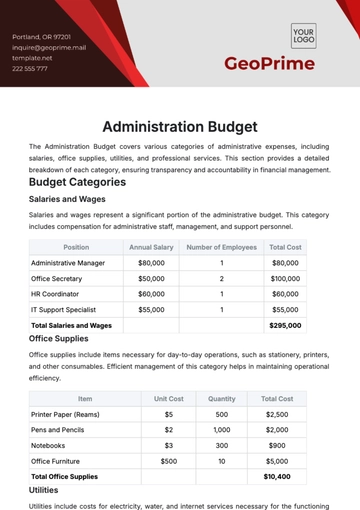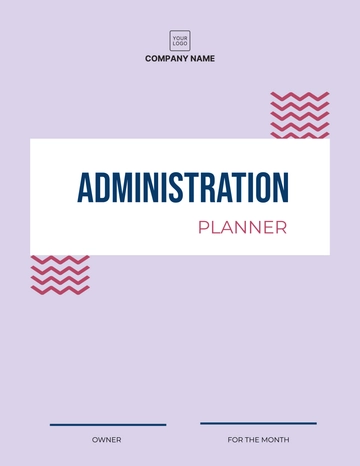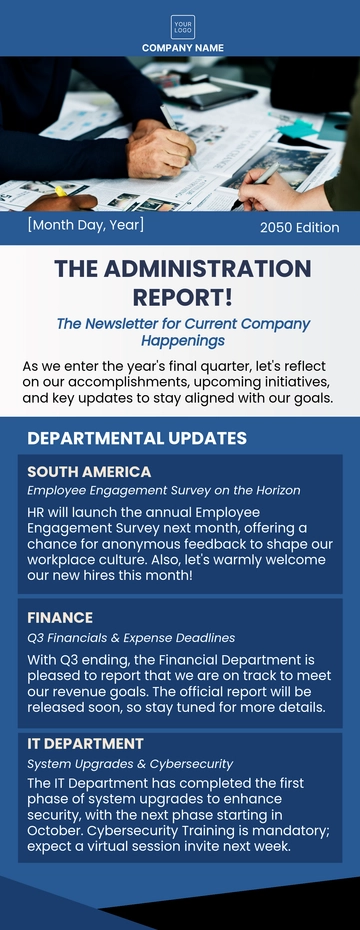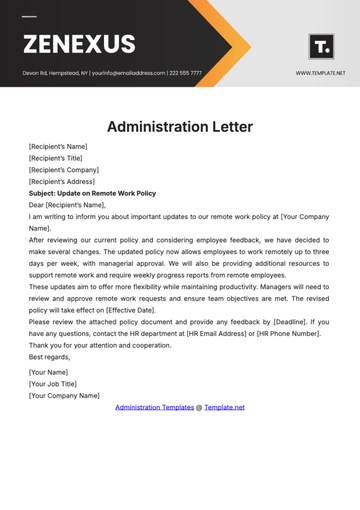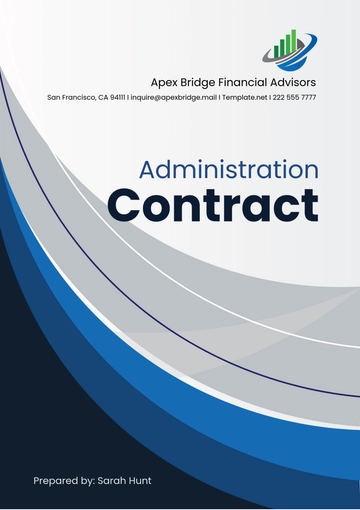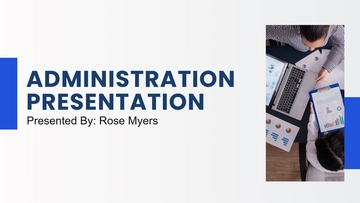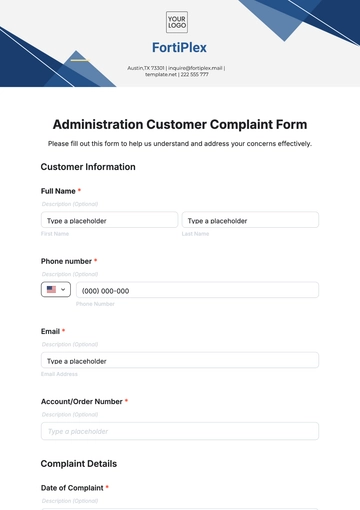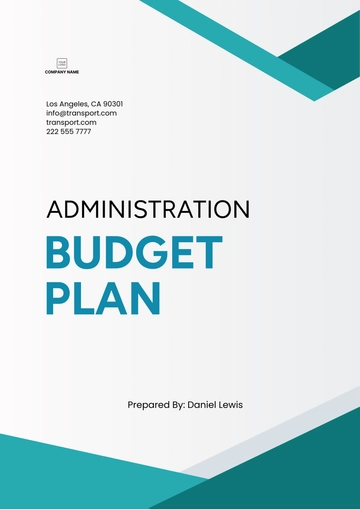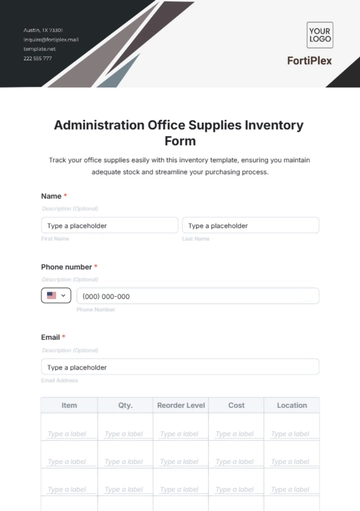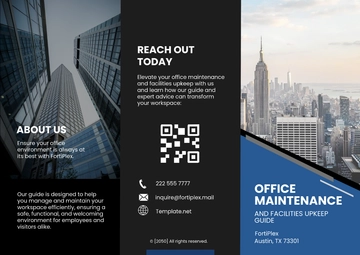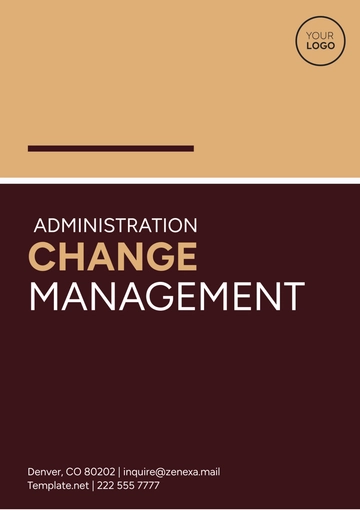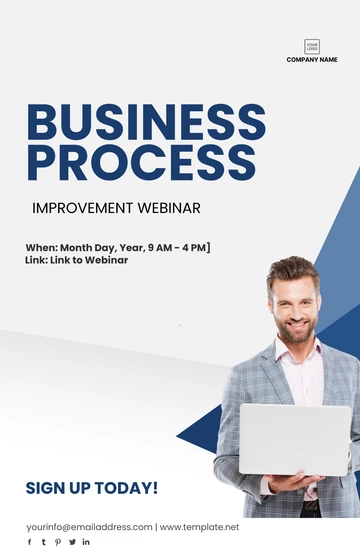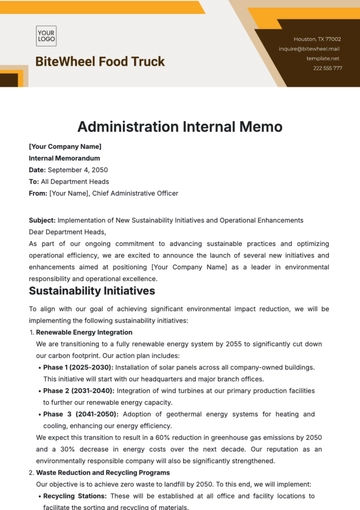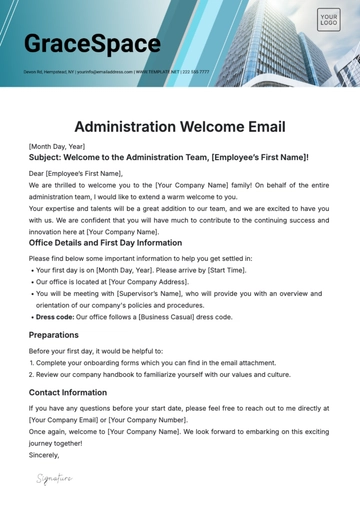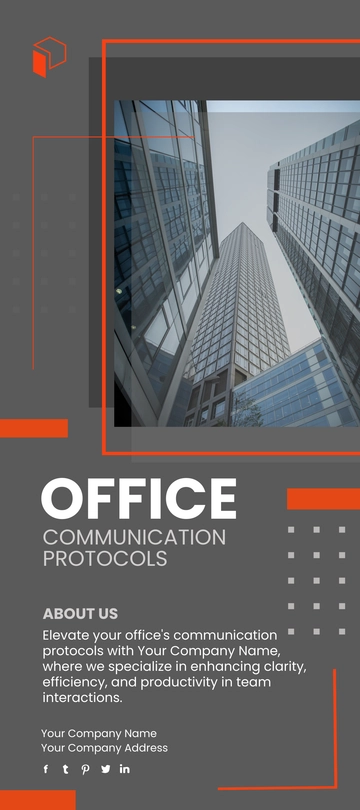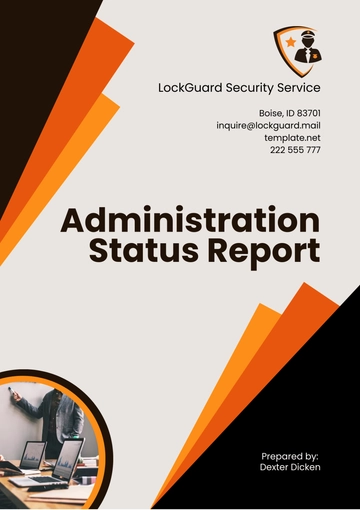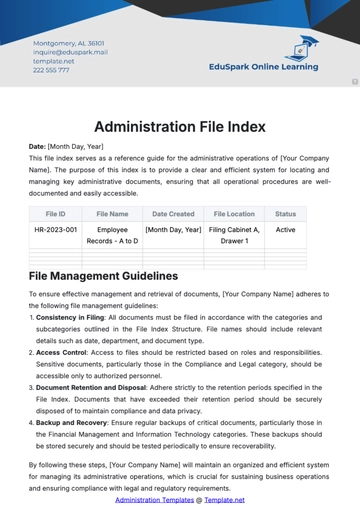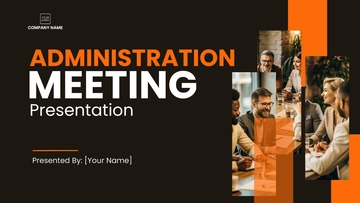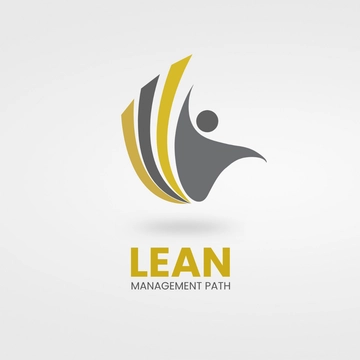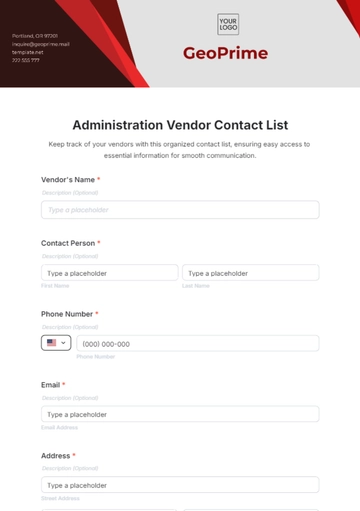Free Administration Public Relations Campaign
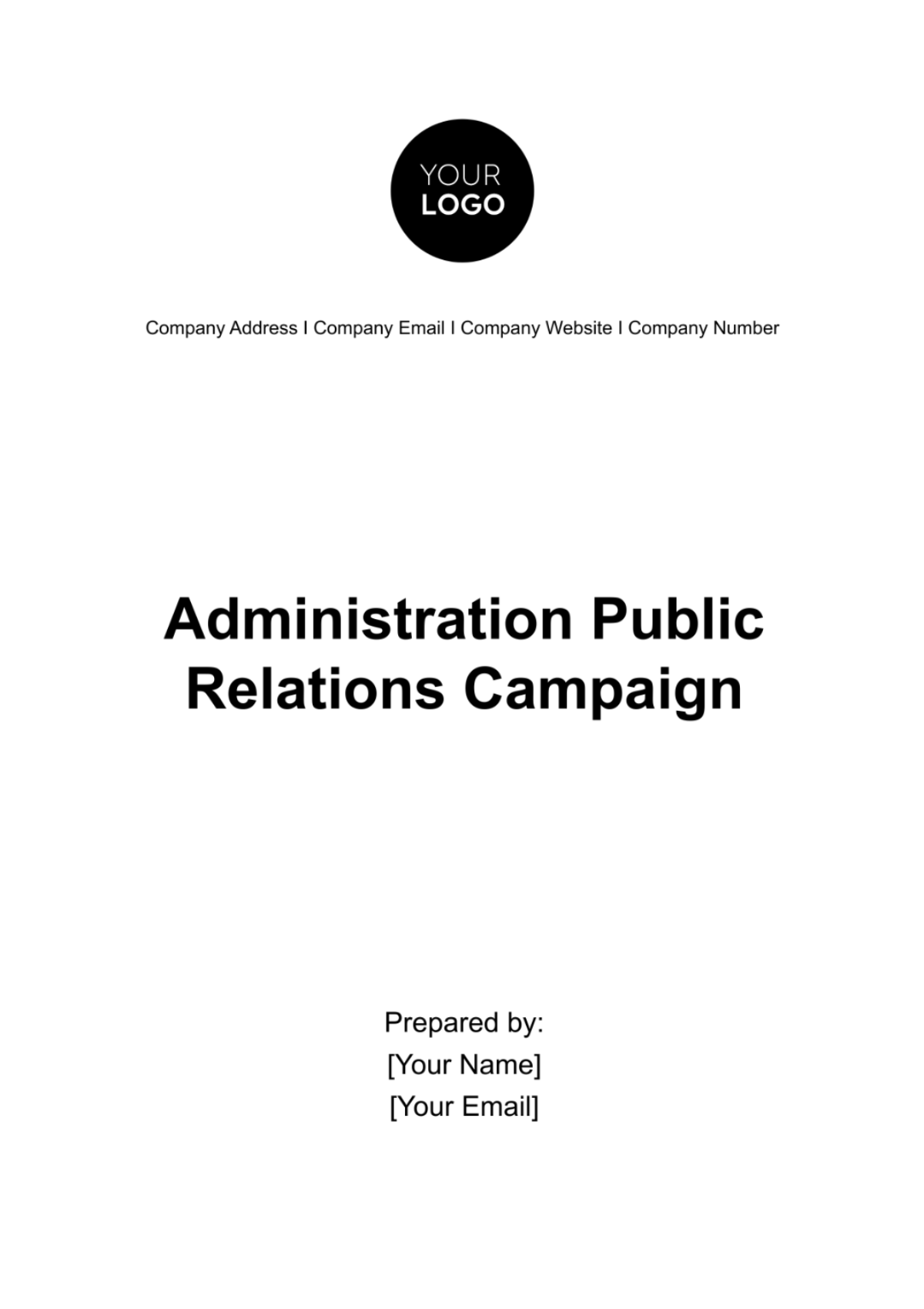
I. Introduction
Welcome to the Public Relations Campaign for "[Your Company Name]". Our mission is to enhance our company's public image, strengthen relationships with key stakeholders, and communicate our commitment to innovation and customer satisfaction. This campaign is pivotal in aligning our strategic goals with public perception, ensuring we remain at the forefront of our industry.
II. Campaign Objectives
Our objectives are designed to be SMART: Specific, Measurable, Achievable, Relevant, and Time-bound, aiming to achieve both long-term and short-term goals.
Increase Brand Awareness: Enhance the visibility of "[Your Company Name]" by 30% among our target demographic within the next 12 months.
Improve Public Perception: Elevate public perception of our brand, aiming for a 25% improvement in customer satisfaction scores.
Strengthen Stakeholder Relations: Deepen relationships with at least 5 key stakeholders, aiming for a 20% increase in stakeholder engagement.
Crisis Management: Reduce the impact duration of potential crises by 50% through proactive communication strategies.
III. Target Audiences
Understanding and effectively engaging with our target audiences are fundamental to the success of the Public Relations Campaign for "[Your Company Name]." A multi-layered approach allows us to tailor our communication strategies to meet the specific needs and preferences of each group, enhancing the overall impact of our campaign.
Primary Audience: Tech-Savvy Consumers
Demographics: | Primarily aged between 20 and 45, these individuals are active users of technology, social media, and online shopping platforms. They value innovation, quality, and sustainability in the products they choose. |
Psychographics: | This group seeks products and services that not only meet their immediate needs but also align with their personal values and lifestyle. They prefer brands that demonstrate social responsibility, innovation, and a commitment to customer service. |
Engagement Strategies: | To engage this audience, we will leverage social media platforms, interactive digital content, and targeted online advertising. Personalized communication and offers, based on their browsing and purchase history, will enhance relevance and engagement. |
Secondary Audience: Industry Stakeholders
Demographics: | This group includes partners, investors, local communities, and industry influencers. Their ages and backgrounds may vary, but they share a common interest in the [industry] sector's growth and sustainability. |
Psychographics: | Stakeholders are interested in long-term outcomes, such as sustainability, corporate governance, and innovation. They value transparency, ethical practices, and strategic vision in their partnerships. |
Engagement Strategies: | For stakeholders, we will focus on direct communication channels, such as newsletters, stakeholder meetings, and corporate events. Providing regular updates on company achievements, sustainability initiatives, and strategic direction will be key to maintaining their support and trust. |
IV. Key Messages
Crafting compelling key messages is essential to resonate with our diverse audience segments. These messages will be consistently communicated across all platforms and interactions to reinforce our brand's values and campaign objectives.
Key Message to Tech-Savvy Consumers:
Innovation at Your Fingertips: "Discover how [Your Company Name] is pioneering the future of [industry] with cutting-edge solutions designed to enhance your daily life. Join us in embracing innovation that matters."
Quality and Reliability You Can Trust: "With [Your Company Name], experience the perfect blend of quality, performance, and reliability. Our commitment to excellence ensures that you receive only the best products and services."
A Sustainable Future Together: "We're not just building technology; we're creating a sustainable future. [Your Company Name] is dedicated to eco-friendly practices and products, helping you make choices that benefit our planet."
Key Message to Industry Stakeholders:
Strategic Vision for Growth: "[Your Company Name] is at the forefront of [industry], driving growth through innovation and strategic partnerships. Together, we can shape the future of our industry."
Commitment to Sustainability and Ethics: "Our commitment to sustainability and ethical practices is unwavering. [Your Company Name] is dedicated to making a positive impact on society and the environment, setting new standards for corporate responsibility."
Collaboration and Transparency: "Through collaboration and transparency, [Your Company Name] fosters strong relationships with all stakeholders. We believe in open communication and shared goals to achieve mutual success."
V. Strategies and Tactics
To effectively communicate our key messages and achieve our objectives, we will implement a mix of strategic approaches and tactics.
Digital Strategies | Traditional Strategies |
|---|---|
Social Media Engagement: Launch targeted campaigns on platforms like Instagram and Twitter to showcase our innovations and behind-the-scenes work, using interactive content like live Q&As, polls, and hashtag challenges to engage our audience. | Media Outreach: Build relationships with key journalists and influencers in our industry for feature articles, interviews, and product reviews, enhancing our brand's credibility and reach. |
Content Marketing: Develop a series of blog posts and articles for our website and LinkedIn, focusing on industry trends, our technology, and success stories, positioning [Your Company Name] as a thought leader. | Community Relations: Sponsor local events and initiatives that align with our brand values, such as sustainability or technology education, to build goodwill and engage directly with our community. |
Community Engagement:
Customer Forums and Workshops: Host virtual and in-person forums where customers can learn about our products, provide feedback, and engage with our team, fostering a strong community of advocates.
Partnership Programs: Develop strategic partnerships with educational institutions and other organizations to co-create content, events, and programs that benefit our community and enhance our brand visibility.
VI. Communication Channels
Selecting the right channels to reach our target audiences is crucial for the success of our campaign.
Online Channels | Offline Channels |
|---|---|
Social Media Platforms: Tailor content for each platform, focusing on Instagram for visual storytelling, LinkedIn for professional articles and company updates, and Twitter for real-time engagement and customer service. | Press Conferences and Media Events: Organize press conferences for major announcements and media events to generate coverage in print and broadcast media, leveraging these opportunities to tell our story directly. |
Email Marketing: Segment our email list to send personalized updates, product news, and exclusive offers, driving engagement and loyalty. | Community and Industry Events: Participate in and sponsor events that align with our brand values, such as tech expos, community fairs, and academic conferences, to increase visibility and engage with our audience in meaningful ways. |
Company Blog and Website: Regularly update our blog with insightful articles, industry news, and product information, optimized for SEO to attract organic traffic. |
VII. Timeline
Our campaign will be executed in phases over the next 12 months.
Phase | Duration | Key Activities |
|---|---|---|
Planning | Month 1 | Finalize strategy, Develop materials |
Launch | Month 2 | Kickoff event, Press release |
Maintenance | Months 3-10 | Social media engagement, Community events |
Conclusion | Month 11 | Final Report and Evaluation |
VIII. Budget
Our estimated budget is allocated across various tactics, with a focus on maximizing return on investment.
Item | Estimated Cost |
|---|---|
Social Media Campaign | $[Amount] |
Press Releases | $[Amount] |
Community Events | $[Amount] |
Crisis Management Training | $[Amount] |
Total | $[Amount] |
IX. Monitoring and Evaluation
In order to effectively track our progress and accurately measure our success, we will be employing certain key performance indicators (KPIs). These will serve as a guide to assess how well we are achieving our targets and goals. The first of these indicators is Brand Awareness. For this, we will monitor the increase in our social media followers and engagement levels. This will reveal how well our brand is resonating with the online community and to what extent they are interacting with our content.
The second KPI we will be focused on is Public Perception. This will be measured by analyzing the improvement in our customer satisfaction survey scores. These scores will give us an insight into how well we are meeting, or hopefully surpassing, our customers' needs and expectations.
Finally, we will also concentrate on Stakeholder Relations as a KPI. This area’s progress will be tracked by examining the increase in the frequency of stakeholder meetings and the positive feedback we receive from them. This will enable us to understand and address our stakeholders' concerns more efficiently, consequently improving our relations with them.
X. Risk Management
Effective risk management is crucial for the success of our Public Relations Campaign. By identifying potential risks early, we can prepare strategies to mitigate them, ensuring our campaign remains on track and our brand's reputation is protected.
Anticipating Risks:
Negative Publicity: Negative media coverage or social media backlash can significantly impact our brand. To mitigate this, we will monitor online and offline mentions closely, using social listening tools. A rapid response team will be ready to address any negative mentions or feedback with transparency and positivity.
Crisis Situations: Unexpected events, such as product recalls or data breaches, require a swift and strategic response. Our crisis management plan includes predefined response protocols, key message templates, and a communication chain of command to ensure consistent and effective messaging.
Stakeholder Opposition: Resistance or criticism from key stakeholders could derail our campaign objectives. Engaging in open dialogue, conducting regular update meetings, and addressing concerns proactively will be key to maintaining strong relationships.
Mitigation Strategies:
Proactive Communication: Keeping lines of communication open with all stakeholders, including employees, customers, and the media, helps in managing expectations and reducing the spread of misinformation.
Training and Preparedness: Regular training sessions for our PR and communications team on crisis management and media handling will ensure that everyone is prepared to act decisively and professionally.
Monitoring and Adaptation: Continuous monitoring of the campaign’s progress and public sentiment will allow us to adapt our strategies as needed. By being flexible and responsive, we can navigate potential risks more effectively.
XI. Conclusion
The Public Relations Campaign for "[Your Company Name]" is designed to be a dynamic and impactful initiative that not only promotes our brand but also engages deeply with our customers and stakeholders. Through careful planning, strategic communication, and a commitment to our core values, we aim to elevate our brand's presence in the market, foster lasting relationships, and build a strong, positive public perception.
Reflecting on Our Journey:
This campaign represents a strategic effort to align [Your Company Name]'s vision with the expectations and needs of our audience. By focusing on innovation, transparency, and community, we are poised to make significant strides in enhancing our brand's image and influence.
Looking Forward:
As we execute this campaign, we will continuously evaluate our progress against our objectives, remaining adaptable and responsive to both opportunities and challenges. The insights gained from this campaign will inform our future strategies, ensuring that [Your Company Name] remains a leader in our industry and a trusted partner to our customers and stakeholders.
A Call to Action:
We invite our team, partners, and the broader community to join us in this exciting journey. Together, we can achieve remarkable things and set new standards of excellence in [industry]. Let's move forward with confidence, creativity, and a shared vision for success.
- 100% Customizable, free editor
- Access 1 Million+ Templates, photo’s & graphics
- Download or share as a template
- Click and replace photos, graphics, text, backgrounds
- Resize, crop, AI write & more
- Access advanced editor
Launch impactful PR campaigns with Template.net's Administration Public Relations Campaign Template. Crafted for excellence, this template is fully customizable and editable via our Ai Editor Tool, enabling you to tailor your public relations efforts to perfection. Amplify your message, engage your audience, and achieve your communication goals with our professional template designed for success.


